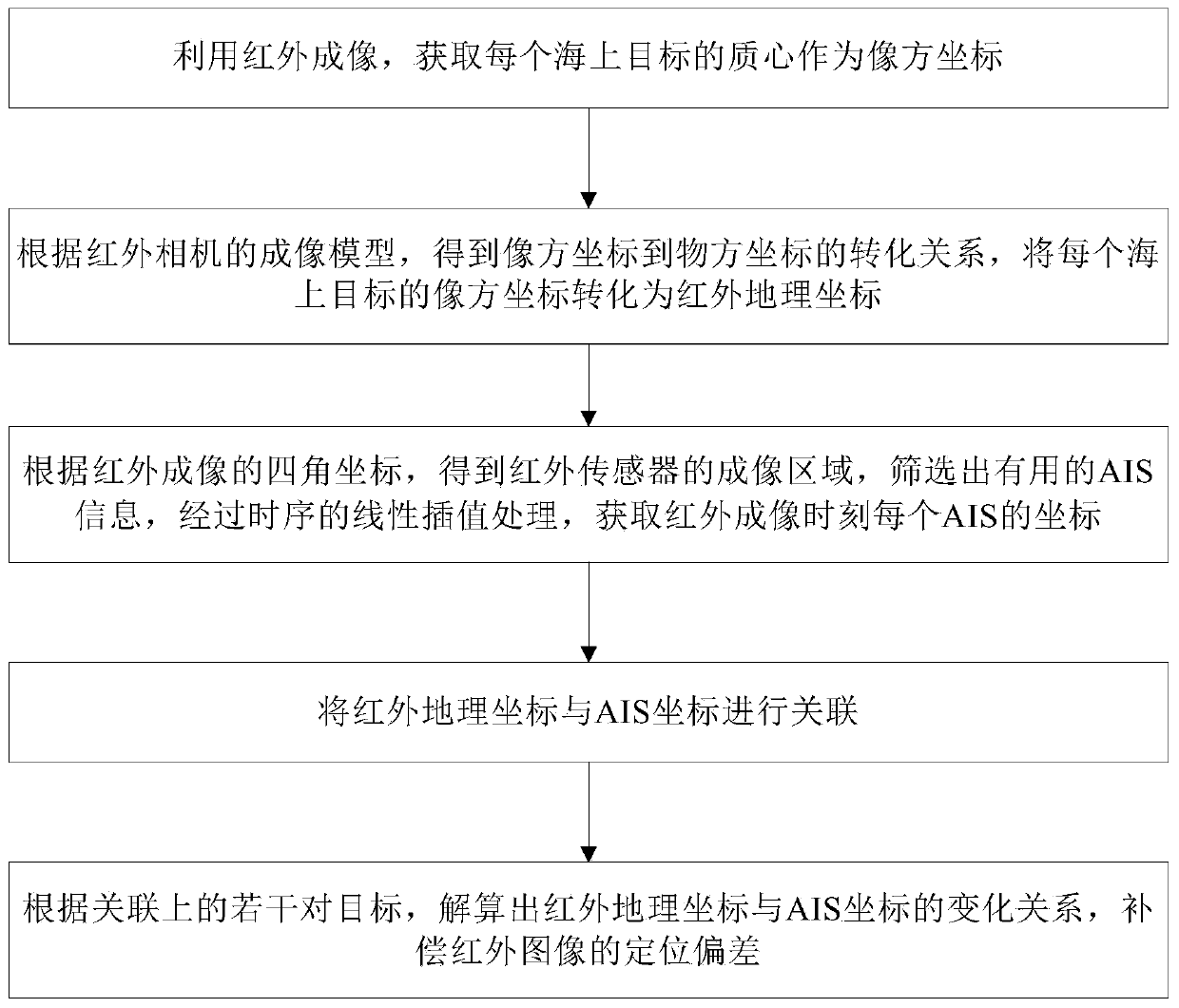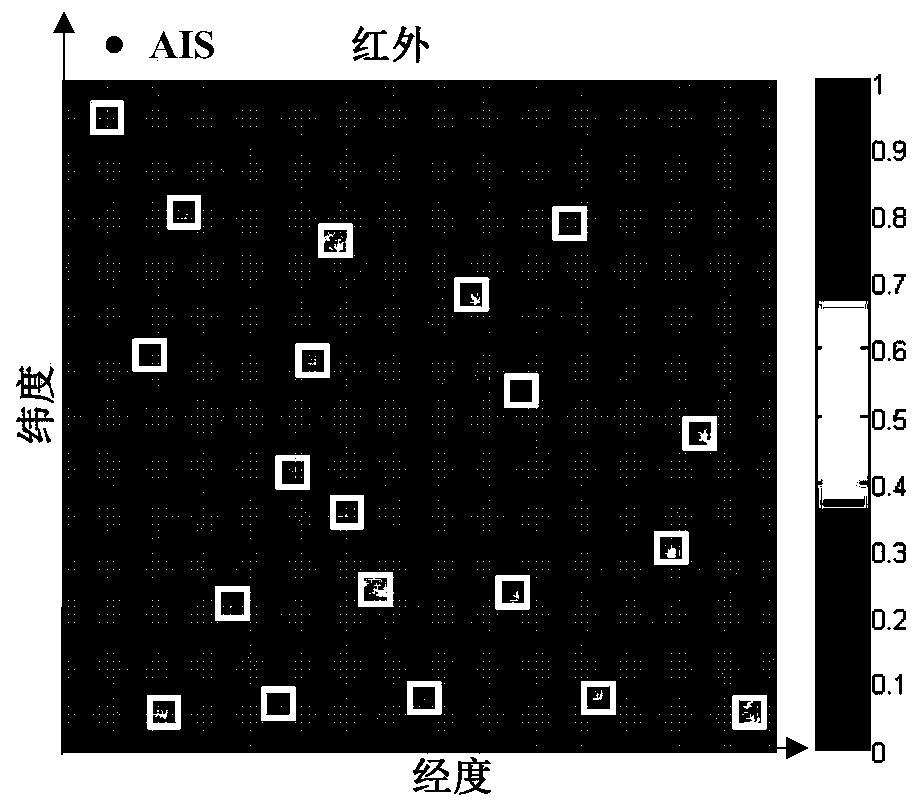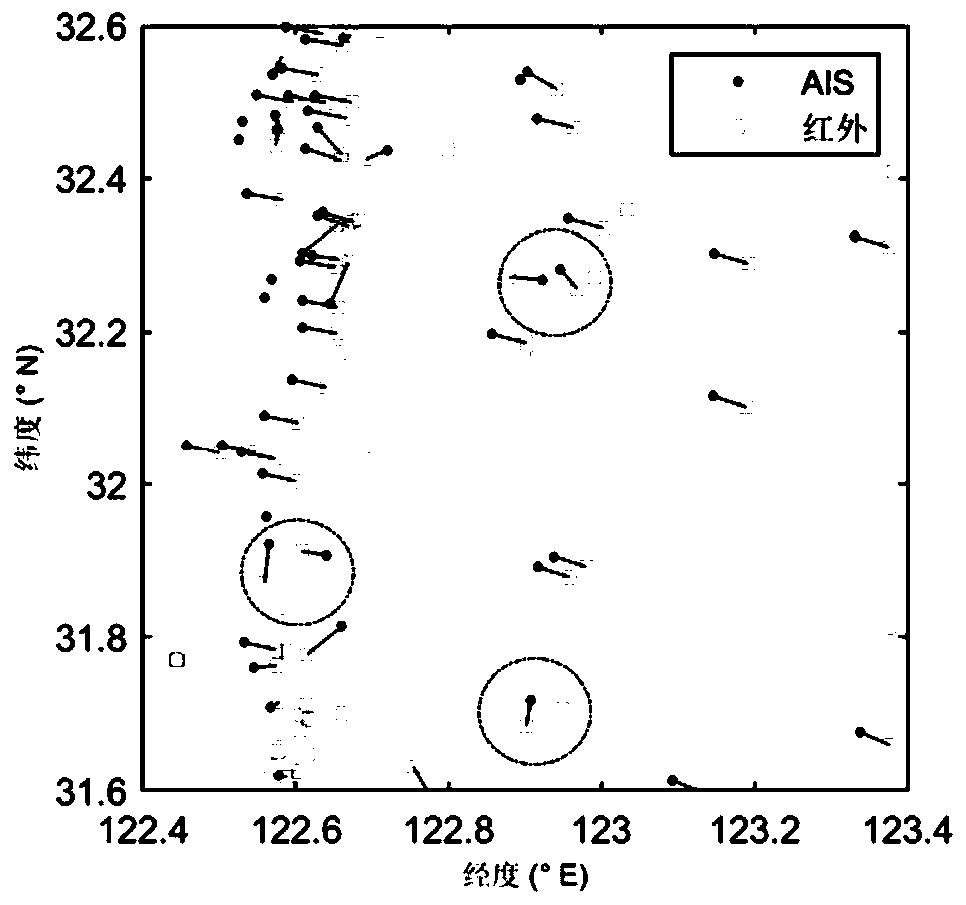Co-location method for marine targets based on satellite-borne AISs and infrared camera
An infrared camera and co-location technology, applied in satellite radio beacon positioning systems, measuring devices, instruments, etc., can solve the problems of difficulty in obtaining the precise position of the target, poor target correlation effect, etc. The effect of improving positioning accuracy
- Summary
- Abstract
- Description
- Claims
- Application Information
AI Technical Summary
Problems solved by technology
Method used
Image
Examples
Embodiment Construction
[0042] In order to make the purpose, technical solution and advantages of the present invention clearer, the technical solution of the present invention will be clearly and completely described below in conjunction with specific embodiments of the present invention and corresponding drawings. Apparently, the described embodiments are only some of the embodiments of the present invention, but not all of them. Based on the embodiments of the present invention, all other embodiments obtained by persons of ordinary skill in the art without making creative efforts fall within the protection scope of the present invention.
[0043] The technical solutions provided by the embodiments of the present invention will be described in detail below in conjunction with the accompanying drawings.
[0044] The embodiment of the present invention provides a method for cooperative positioning of maritime targets based on spaceborne AIS and infrared cameras, as shown in the attached figure 1 As ...
PUM
 Login to View More
Login to View More Abstract
Description
Claims
Application Information
 Login to View More
Login to View More - R&D
- Intellectual Property
- Life Sciences
- Materials
- Tech Scout
- Unparalleled Data Quality
- Higher Quality Content
- 60% Fewer Hallucinations
Browse by: Latest US Patents, China's latest patents, Technical Efficacy Thesaurus, Application Domain, Technology Topic, Popular Technical Reports.
© 2025 PatSnap. All rights reserved.Legal|Privacy policy|Modern Slavery Act Transparency Statement|Sitemap|About US| Contact US: help@patsnap.com



